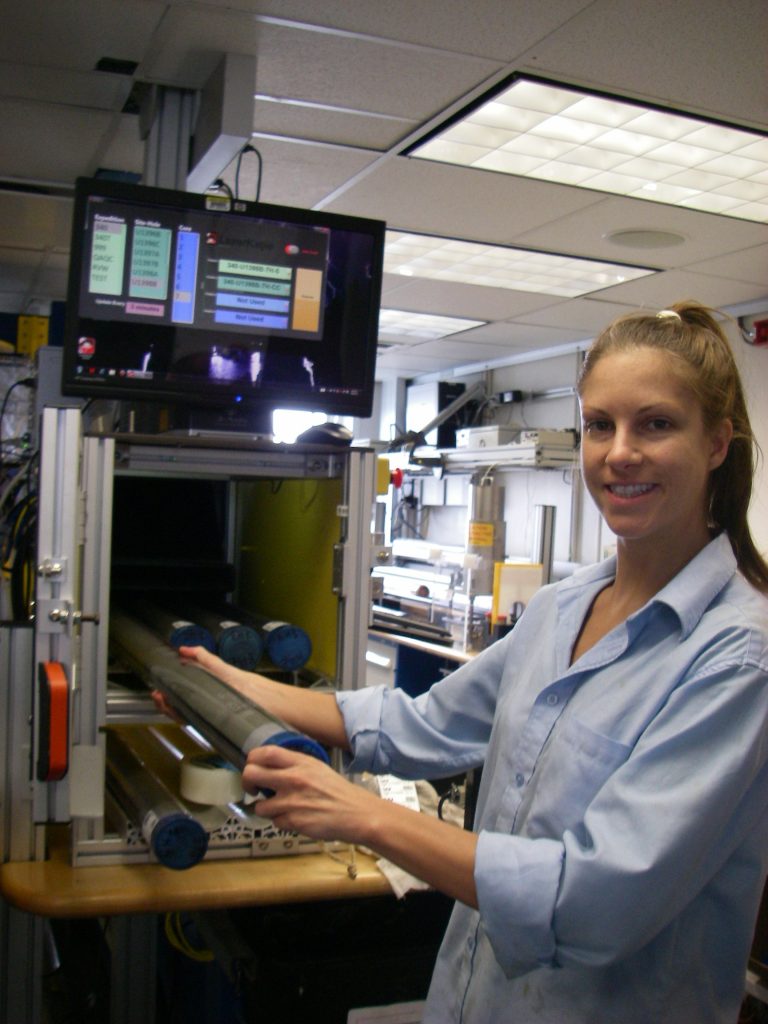
Science Daily Week 3: Part 2 Cores Further Offshore
Welcome to Part 2 of the Science Dailies for Week 3 of our sampling along the western side of the island of Martinique. We completed sampling near the island and then sailed to location CARI-09 which was ~50 miles west of Martinique near the Grenada Basin. Water depth at this site increased to nearly 3000 meters. This required more time to prepare for drilling with the additional drill pipe to trip in order to reach the seafloor through 3000 m of seawater. Thank you to Expedition 340 scientist, Takeshi Saito, for generously sharing photos for this blog. Read on for the rest of week 3 science results. The following are science results as summarized by 340 Staff Scientist, Nicole Stroncik.
Daily Science Report for Friday 23 MARCH 2012
At 0630 we started our logging operations in Hole U1397B with the triple combo tool string. After two passes through the hole, we finished logging with the triple combo at 1015 and prepared for logging with the FMSsonic tool string. At 1330 we started logging with the FMS-sonic and conducted two logging passes. Our logging operations at this site were finished at 1800. The remainder of the evening was spent preparing the rig floor and the ship for our transit to Site U1398.
Daily Science Report Saturday 24 MARCH 2012
At 0245 we started the 46 nautical mile transit to Site U1398 (CARI-09B), depth 2935 mbsl, and were positioning over this site at 0700. After assembling the drill string and picking up the bottom hole assemblage we started coring Hole U1398A at 1551 hrs. Seven cores penetrated 51 m into the formation and recovered 31 m of material. The cored material consists of mainly volcaniclastic sediments composed of dark, ash-sized particles and variably large andesitic pumice and lava clasts.
Daily Science Report for 25 March 2012
During the last 24 hours we retrieved 20 Cores and recovered 76 m of material reaching 240 m into the formation. The cored material consists of volcaniclastic and hemipelagic sediments as well as tephra layers of varying thickness and composition.
Even though we did not reach our depth objectives for site Site U1397 (CARI-10), the retrieved material will allow us to study the eruptional and depositional history of Martinique extending back to ~350 ka. A distinct volcanic marker as well as the bio- and magnetostratigraphy assign the base reached at this site to an age of 350 to 400 ka. Cores revealed tephra from volcanoes of Dominica, which can be distinguished from Martinique lavas based on their geochemistry and micro-textural characteristics.
TTTTTTHHHHHAAAAATTTT’SSSSS All Folks for this week’s Science Report.
The material being retrieved from Expedition 340 ocean drilling is revealing a more detailed history of volcanic behavior in the Lesser Antilles.



